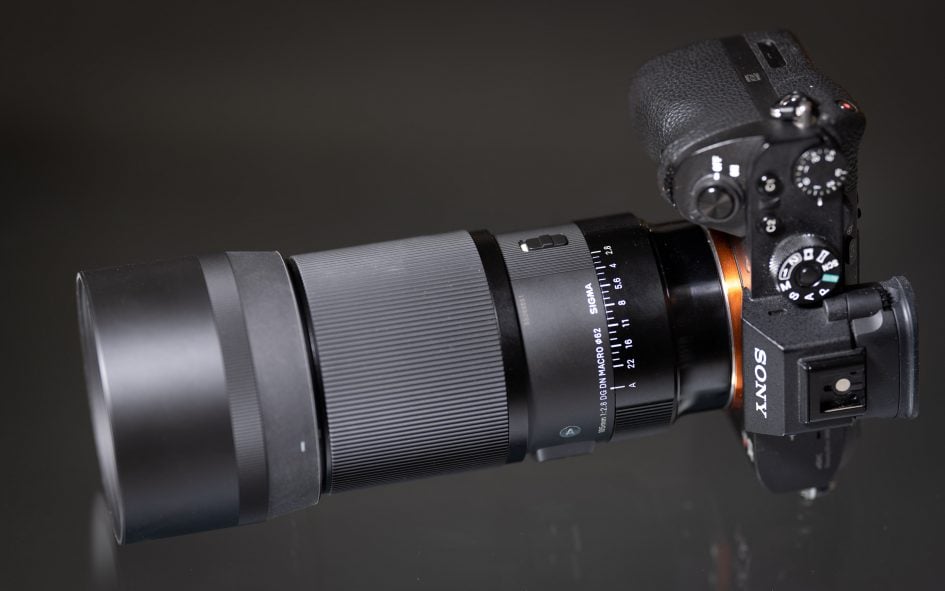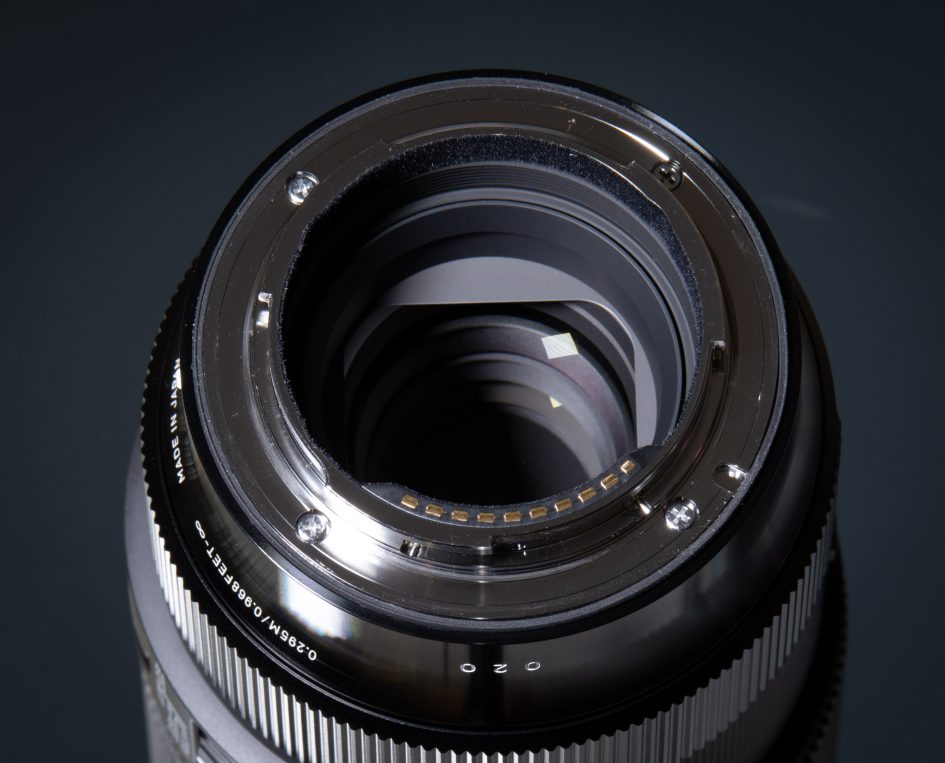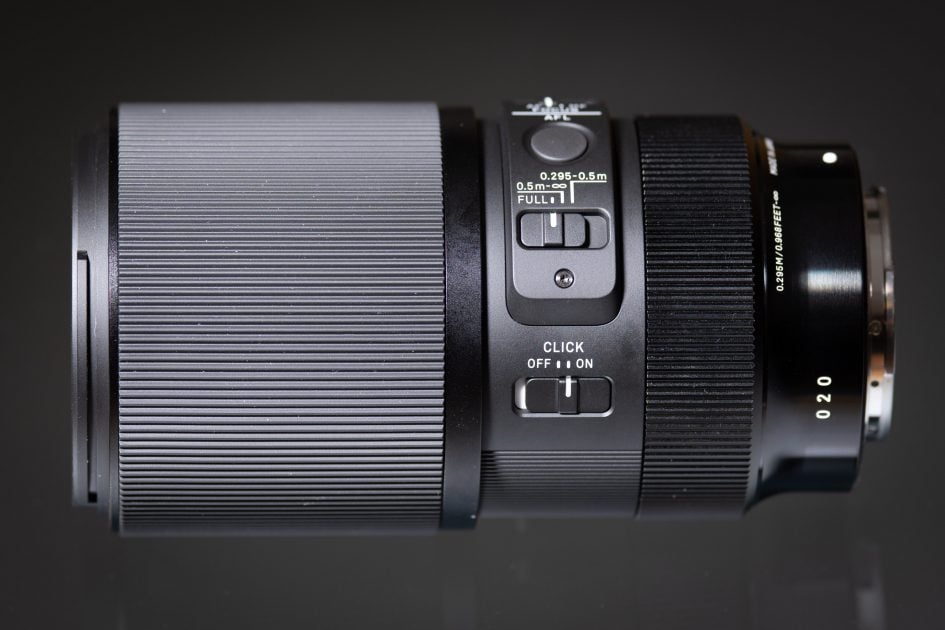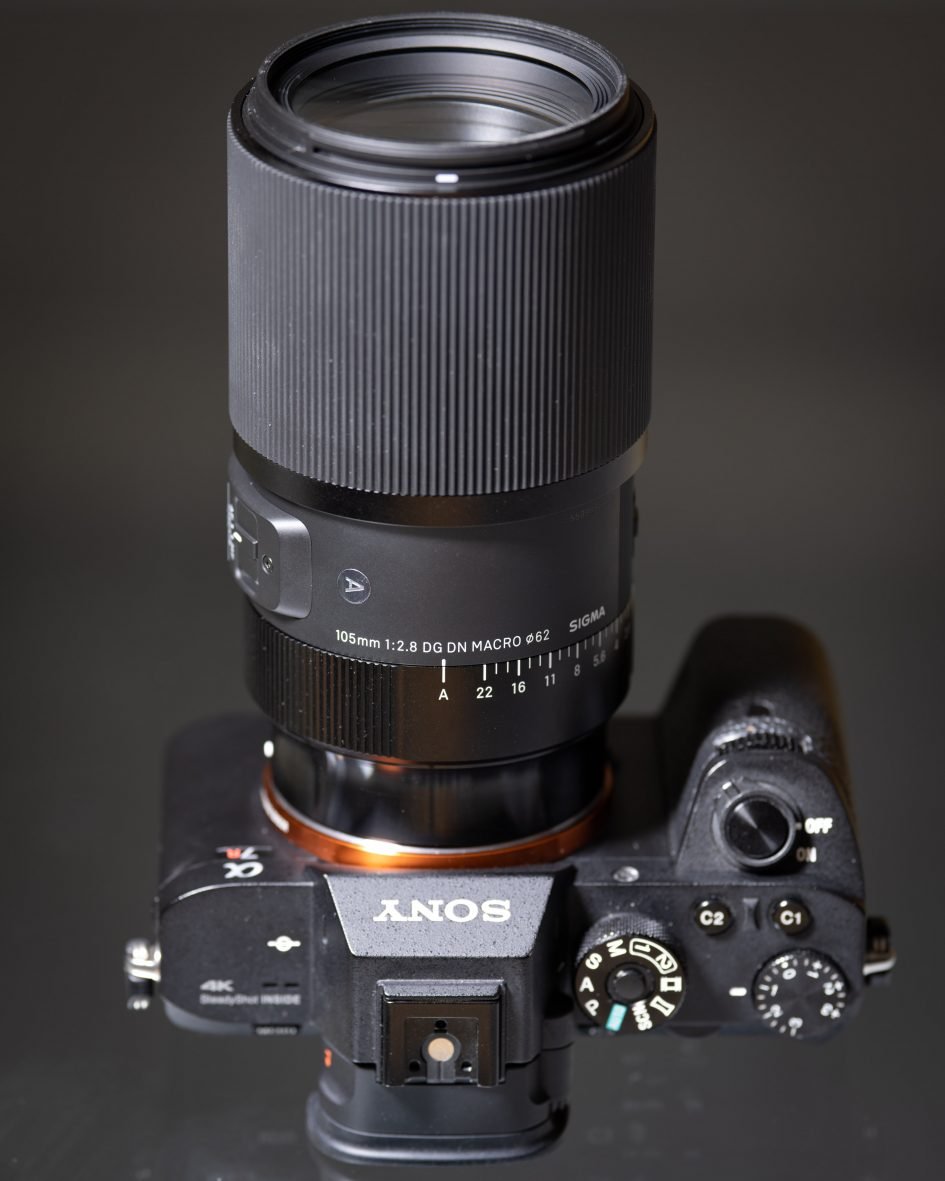Sigma 105mm f2.8 DG DN Macro Art review
-
-
Written by Thomas
Intro
The Sigma 105mm f2.8 DG DN Macro Art is the first macro lens for Sigma’s DN-series of lenses designed specifically for mirrorless cameras with Sony E-mount and Leica L-mount. A popular focal length for macro photography and general-purpose use, it features the same f2.8 focal ratio as Sigma’s 105mm f2.8 EX DG OS HSM Macro from 2011 which was designed for DSLRs. Sigma has however developed a completely new optical design for their newest macro lens and also added some nice features like a de-clickable aperture ring and an additional button which can be assigned AF-lock or other functions.
The Sigma 105mm f2.8 DG DN Macro Art is listed at 749 EUR / 799 USD / 699 GBP and is now the fifth lens of their Art series which was specifically designed for mirrorless cameras. PS – if you’re interested in the other Sigma DG DN Art lenses check out our in-depth reviews: Sigma 35mm f1.2 DG DN Art review, Sigma 24-70mm f2.8 DG DN Art review, Sigma 85mm f1.4 DG DN Art review. There’s also lots of sample images in the Sigma 12-24mm f2.8 DG DN Art review-so-far.
Facts from the catalog
Let’s compare the Sigma 105mm f2.8 DG DN Macro Art (“Sigma Art” for short) to the Sony FE 90mm f2.8 G OSS Macro (“Sony”) and Sigma 105mm f2.8 EX DG OS HSM Macro (“Sigma HSM”) which can be used via Sigma’s MC-11 mount-converter on a Sony mirrorless camera. As usual I’ve rated the features with a [+] (or [++]), when it’s better than average or even state of the art, a [0] if it’s standard or just average, and [-] if there’s a disadvantage.
Size (diameter x length): At 75 x 136mm (3.0 x 5.4in.) plus 57mm for the lens hood (85mm diameter) the new Sigma Art is similarly sized as the Sony at 79 x 131mm (without lens hood). The Sigma HSM is 78 x 126mm w/o lens hood – and you need to add 26mm in length for the mount-converter. These all are not small lenses. [0]
Weight: 708g (25 oz.) plus 47g for the lens hood. The Sony is only 602g w/o lens hood, the Sigma HSM is 725g w/o lens hood plus an estimated 100g for the mount-converter. [0]
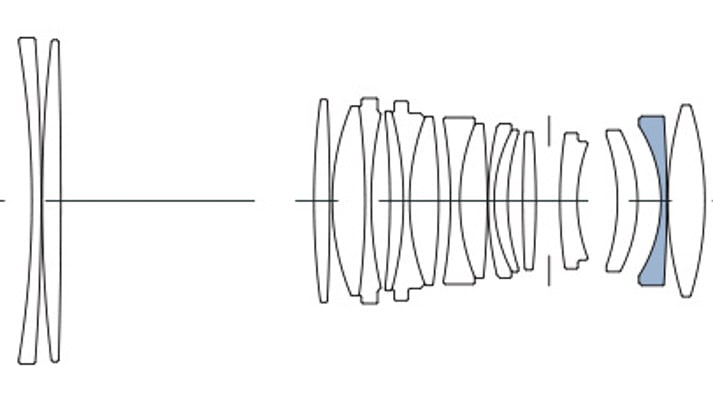
Optics: The Sigma Art is a pretty complex design with 17 elements in 12 groups including one special dispersion element. This is similar to the Sony (15 elements in 11 groups) and Sigma HSM (16 elements in 11 groups). The Sigma Art has fluorine-coating on the front element to repel water, dust, and dirt and make cleaning easier – which the Sony and Sigma HSM seem to miss. [+]
Closest focus distance is 0.30m (0.97ft.) with a magnification of 1:1 which is what you come to expect from a macro lens. This results in a working distance of only 0.15m (0.5ft.). Both the Sony and Sigma HSM achieve the same magnification at similar working distances. The Sigma Art does not extend while focusing and a magnification of 1:10 is achieved at a distance of 1.24m (4.1ft.) [+]
Use with teleconverters: Yes, Sigma offers two teleconverters TC-1411 and TC-2011 which multiply focal length and maximum magnification by 1.4x resp. 2x – but only for L-mount. From what I can see it seems that the Sigma Art has enough clearance on the mount-side that it probably could be used with Sony’s teleconverters for E-mount (see below). But I couldn’t test my assumption so you better try before you buy. The Sony FE 90mm f2.8 G OSS Macro cannot be used with teleconverters. [+]
Filter-thread: 62mm, just like the Sony and Sigma HSM. [+]
Image stabilization: The Sigma Art has no optical stabilization. But the Sony A7 or Panasonic DC-S1 camera bodies provide built-in sensor-shift stabilization. Both the Sony and Sigma HSM have optical stabilization built in. [0]
Auto focus: Built-in AF drive with hypersonic motor. Manual-focus override is by simply turning the dedicated focus ring – same as with the Sigma HSM. The focus ring of the Sigma Art has a variable gearing (like many lenses designed for mirrorless cameras) which allows for very precise manual focus when turned slowly which is a boon when shooting macro photos. But it cannot be switched to linear gearing which makes smooth focus pulling for videographers pretty hard. The Sony has a dual MF mechanism: When you leave the focus-ring in the front position the lens has the usual focus-by-wire functionality with variable gearing for very precise focusing. But when you full the focus ring back it switches to linear gearing which allows for faster focus action. The Sigma HSM has the usual linear mechanical coupling that is typical for lenses designed for DSLRs – and shows the focus distance in a small window. The Sigma Art and the Sony also have an extra button on the lens which can be assigned many different functions e.g. AF-lock. All three lenses have a focus limiter: the Sigma Art offering three position as you can see below. [+]
Aperture: The lens has an aperture ring with 1/3 stop clicks. There is a switch to turn the clicks off so that the aperture can be operated continuously, smoothly, and noise-free. It also comes with a dedicated lock switch to prevent accidental shifting between aperture control from the ring or the camera. The Sony and Sigma HSM have no aperture ring. Focusing does not change the aperture-value of the lens, so even at a magnification of 1:1 the lens still shows f2.8 although it clearly darkens by 2 EV. That means that the effective aperture of the lens is f2.8-f22 at infinity and f5.6-f44 at minimum object distance. [+]
Lens profile: The lens comes with a lens profile for vignette-, CA- and distortion-compensation which can be controlled from the camera. That’s the same as with the Sony. With the Sigma HSM you have to rely on the profiles supplied e.g. in Adobe’s software. [+]
Covers full frame/FX or smaller. Same with the Sony and Sigma HSM. [+]
Price: 749 EUR (incl. 19% VAT) / 799 USD / 699 GBP. The Sigma HSM currently goes for 380 EUR / 570 USD / 340 GBP and the Sony costs 960 EUR / 1100 USD / 850 GBP. [0]
The lens comes with a padded pouch but no straps. The plastic lens hood is included and is reversible for transport. [+]
Sigma’s service can change the mount of the lens between Sony’s E-mount and L-mount (at a cost). This is a unique feature that no other manufacturer offers. [++]
Sealing: yes, a rubber grommet at the lens-mount plus further special weather-sealing throughout the construction, just like the Sony. The Sigma HSM has no special weather sealing. [+]
The score in the “features-department” is 0[-]/4[0]/12[+]. The new Sigma 105mm f2.8 DG DN Macro Art offers a nice feature set and the unique option to get the lens-mount swapped. Plus it allows the use of teleconverters (at least for L-mount) thereby increasing maximum magnification to 2x. So there’s hardly anything to complain about – on paper.
Alternatives
There are lot of macro lenses for E-mount and a few for L-mount too. But if you want autofocus and a longer focal length there is really only one alternative for L-mount and three alternatives for E-mount:
- Sigma has the 70mm f2.8 DG Macro Art from 2018 for E- and L-mount amongst others. The lens is a little smaller and lighter than its 105mm sibling and at 500 EUR / 570 USD / 450 GBP also considerably cheaper. But it extends when focusing close and also has one-third less reach which probably also translates in shorter working distances at comparable magnifications.
- Sony’s FE 90mm f2.8 G OSS Macro is an original mirrorless design from 2015 for E-mount and costs about 960 EUR / 1100 USD / 850 GBP. It’s around 100g lighter than Sigma’s new lens. It has optical image stabilization but it lacks an aperture ring and has a 14% shorter reach than the new Sigma.
- From Tokina there’s the FiRIN 100mm 2.8 FE Macro, an original mirrorless design from 2019 which is only available for Sony E-mount. It costs 540 EUR / 600 USD / 580 GBP. It’s 145g lighter and 10mm shorter than the new Sigma but extends when focusing. And it does not offer an aperture ring or AF-lock button.
Here is the angle of view that the Sony FE 90mm f2.8 Macro G OSS produces compared to the Sigma 105mm f2.8 DG DN Macro Art:

Angle of view on Sony A7R II (FF) body: Sony FE 90mm f2.8 Macro G OSS (left), Sigma 105mm f2.8 DG DN Macro Art (right)
Focus
Focus accuracy and repeatability is critical to consistently produce sharp shots. Repeatability (the accuracy of focus on the same subject after repeated focus-acquisition) of this lens is pretty good (measured 98.8% in Reikan FoCal) with no outliers over a series of 40 shots. There is almost no focus variation whether the lens focuses from a closer distance or from infinity and I detected very little hunting. The lens focuses in around 0.7 sec from infinity to 1.24m (1:10 magnification), which is OK.
AF-operation of the new lens in photo-mode can be heard from the outside and if you record video with the built-in microphone there are also situations where the drive emits a low buzz.
As you pull focus, you’ll notice quite some focus breathing: the image became 12% less magnified when I adjusted focus from infinity to 1.24m. This is very visible and could be distracting when shooting videos.
There was also a slightly annoying glitch with my copy of the lens: when reversing direction on the focus ring the lens occasionally just went a few ticks further in the old direction before turning around.
Next check out my quality results!
Check prices on the Sigma 105mm f2.8 DG DN Macro Art at B&H, WEX, or Calumet.de! Alternatively get yourself a copy of my In Camera book or treat me to a coffee! Thanks!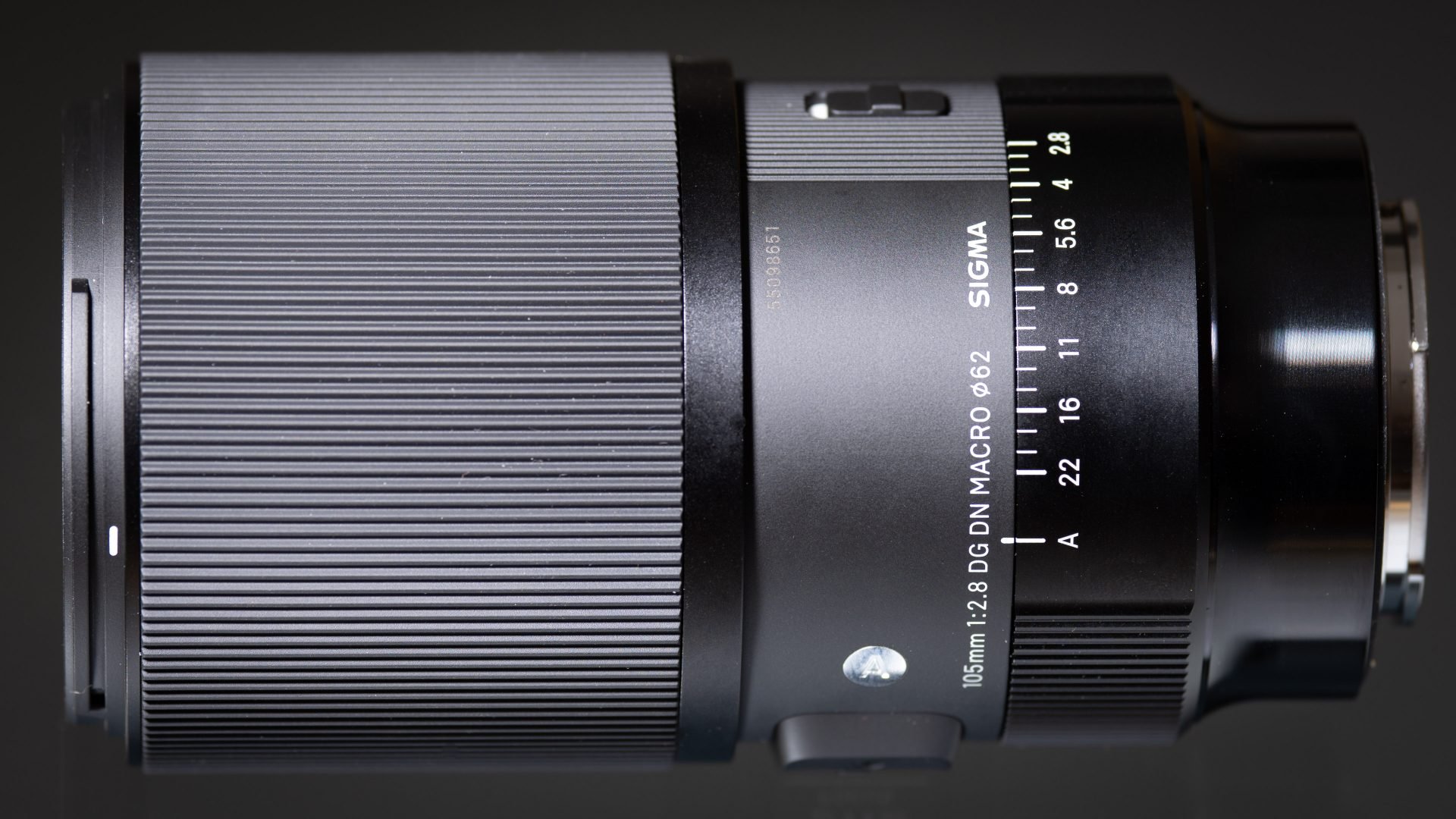
 The Sigma 105mm f2.8 DG DN Macro Art is the first macro lens for Sigma’s DN-series of lenses designed specifically for mirrorless cameras with Sony E-mount and Leica L-mount. The excellent performance makes it a perfect match for high resolution full-frame mirrorless cameras with E-mount or L-mount. It produces extremely sharp images devoid of color aberrations and has a very good feature set - including the option to use teleconverters. It may be missing the optical image stabilization of Sony's FE 90mm f2.8 G OSS Macro but then for professional macro work you'd probably put it on a tripod anyway. All-in-all the 105mm f2.8 DG DN Macro Art clearly earns a Highly Recommended! Let's hope that Sigma soon is able to offer their new lens with Nikon Z-mount and Canon RF-mount too.
The Sigma 105mm f2.8 DG DN Macro Art is the first macro lens for Sigma’s DN-series of lenses designed specifically for mirrorless cameras with Sony E-mount and Leica L-mount. The excellent performance makes it a perfect match for high resolution full-frame mirrorless cameras with E-mount or L-mount. It produces extremely sharp images devoid of color aberrations and has a very good feature set - including the option to use teleconverters. It may be missing the optical image stabilization of Sony's FE 90mm f2.8 G OSS Macro but then for professional macro work you'd probably put it on a tripod anyway. All-in-all the 105mm f2.8 DG DN Macro Art clearly earns a Highly Recommended! Let's hope that Sigma soon is able to offer their new lens with Nikon Z-mount and Canon RF-mount too.